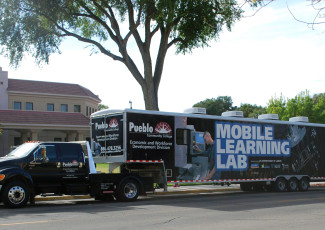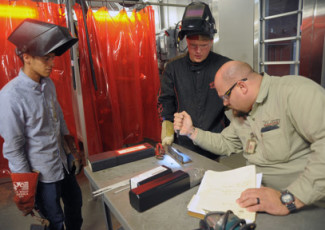Staying Agile With Workforce Training
By Sonya Stinson
February 12, 2016
How one Ohio college entered an emerging industry and continues to evolve its program.
Sinclair Community College, which in January became the nation’s only community college to join the Federal Aviation Administration’s Center of Excellence for Unmanned Aircraft Systems, was an early adopter of unmanned-aircraft technology among its peers, says Deborah Norris, vice president of workforce development and corporate services at the college.
The move got underway following a 2008 trade mission to Israel, which included education, business and government leaders from the Dayton, Ohio, area, who accompanied a contingent from Wright-Patterson Air Force Base. They were looking for ideas about emerging industries that could be attracted to the area to replace a long list of major employers who had left in recent years. When they saw some of the host country’s latest developments in unmanned aircraft systems (UAS), or drones, they recognized how well certain aspects of that technology — including its connection to aviation and its use of sensors, data analytics and advanced materials — related to some of the existing industries in the Dayton region. At Sinclair, there were already strong programs in aviation and data analytics, and the curriculum also included a few courses in sensor technology and advanced materials, Norris says.
Sinclair’s representatives returned from the mission ready to lay the groundwork for the new $5 million National UAS Training and Certification Center that would eventually open in 2015. They decided the center would focus on commercial applications for drones.
“Because we were so early in, there really wasn’t a curriculum that existed anywhere,” Norris says.
The center’s developers not only had to create a curriculum from scratch but also had to build into it enough flexibility to allow making adjustments to comply with the UAS industry’s constantly changing regulations. Maintaining that agility is so important that the college has hired experts who are dedicated to keeping abreast of industry changes and their effect on workforce requirements, Norris says.
“We had our eyes open, because we knew this wasn’t going to be settled in the near term,” she says. “If you kind of expect that going in, you know that every time you present a course you’re going to have to update it.”
Initially, the program offered only noncredit courses, but it evolved to include both noncredit classes and for-credit courses leading to certificates and associate’s degrees. Students can specialize in the use of drones in either precision agriculture, geographic information systems or disaster response.
A mix of classroom and online study is available. Center facilities such as simulation labs, an indoor flying pavilion and a wind tunnel highlight a focus on experiential learning. A number of students are even looking beyond job preparation to thinking about how they might apply UAS technology to the creation of their own new businesses.
“The students are just enamored with the technologies and what they can do with them,” Norris says.

A workforce training model to learn by
Besides its flexible curriculum model, Norris credits two other key elements for the success of Sinclair’s UAS training center: taking a long view of the project as an investment rather than an expense; and taking a partnership approach to the project’s development.
Before the college could begin offering courses in UAS technology, it had to spend money on preliminary steps, such as figuring out now to access air space for the drones, building the simulation labs and hiring subject-matter experts to design the curriculum.
“The reason that we were able to do this,” Norris says, “is that we have a very visionary board and president/CEO that allowed us to do this as an investment. They saw this as future payoff.”
It also was important that the college join forces with others in carrying out its mission to become a leader in UAS workforce development
“Out of the gate, we knew we didn’t want to be an island,” says Norris, who encourages other community college administrators to contact Sinclair to learn more about its experience. “We wanted to have partners in industry, academia and government that could help us, and we could help them.”

Photos courtesy of Sinclair Community College











